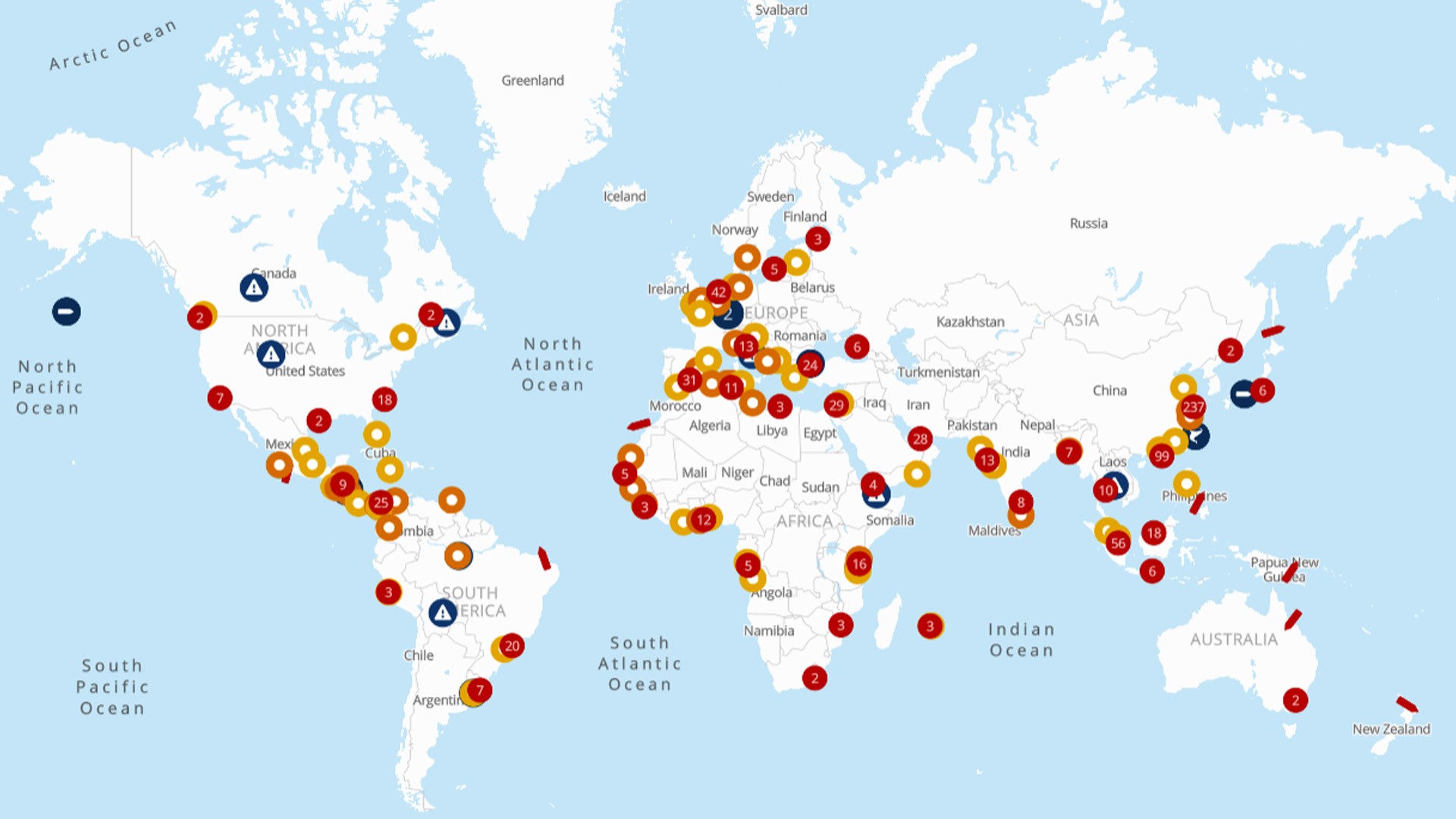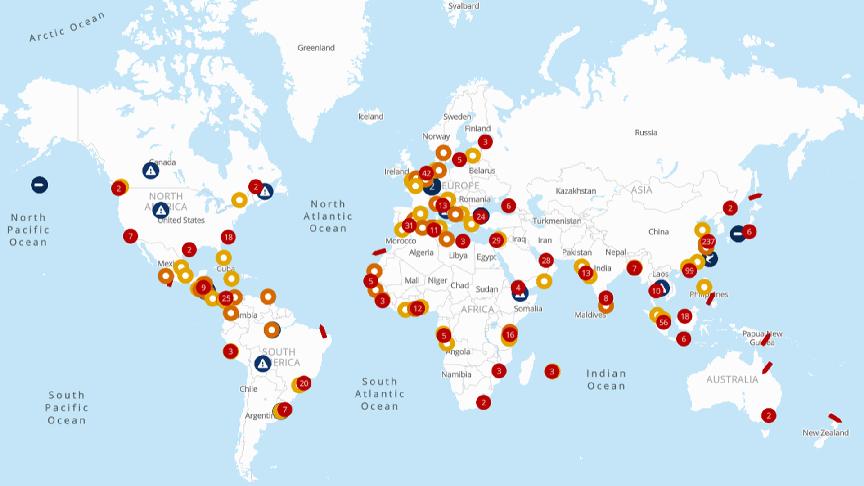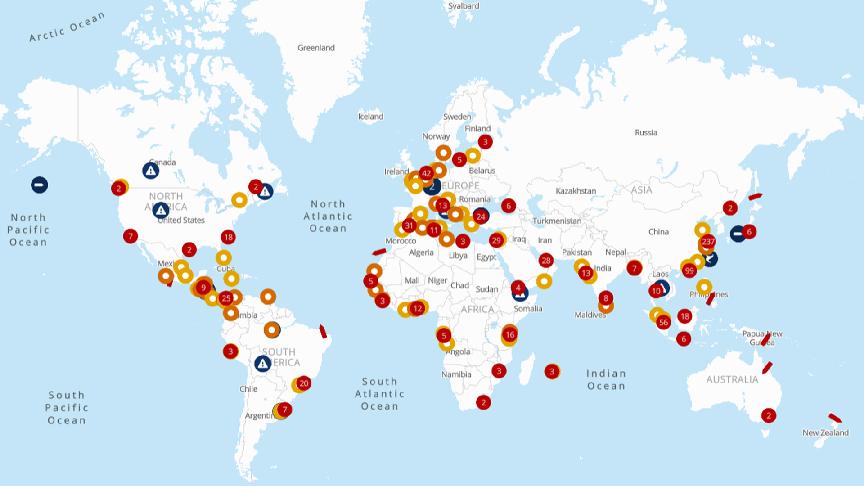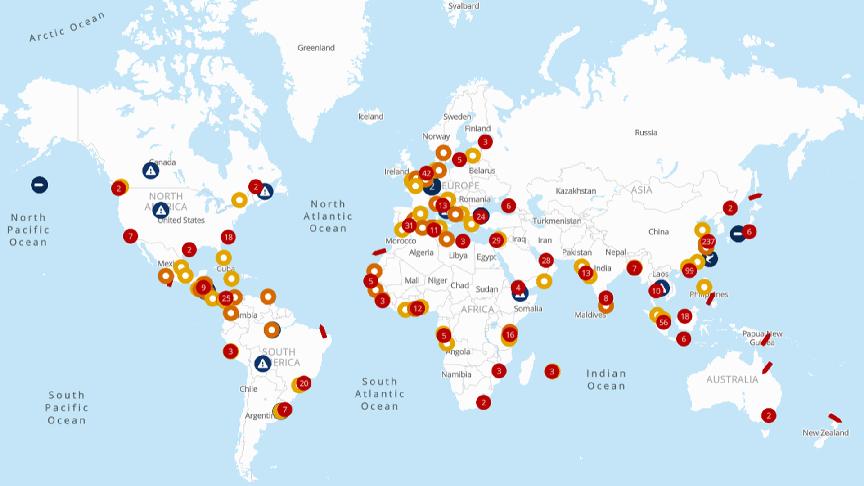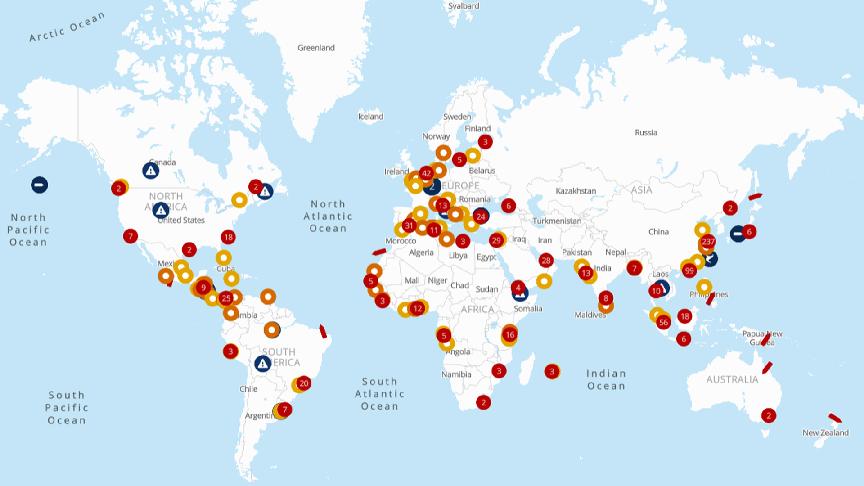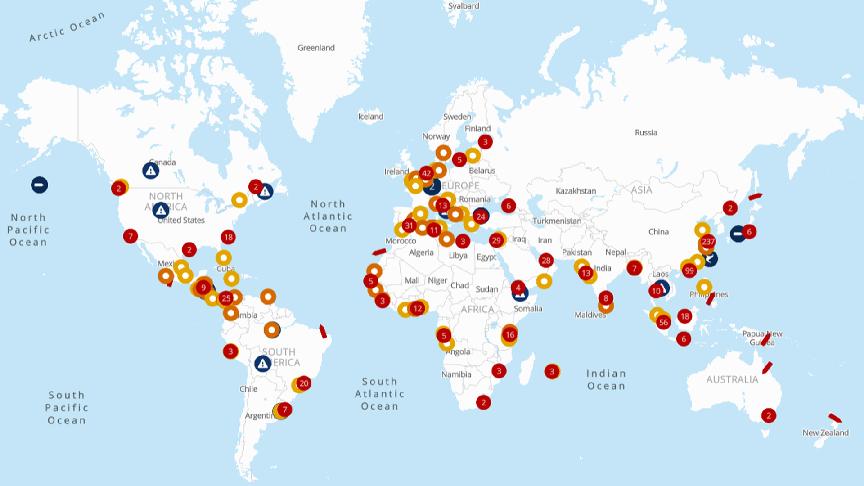- Stay ahead of supply chain disruptions and port congestion with Kuehne+Nagel’s weekly port operational update.
- Find out the latest vessel waiting times and status of ports in Africa, Asia, Oceania, Europe, the Middle East-Indian Subcontinent, North America, and South and Central America.
Africa
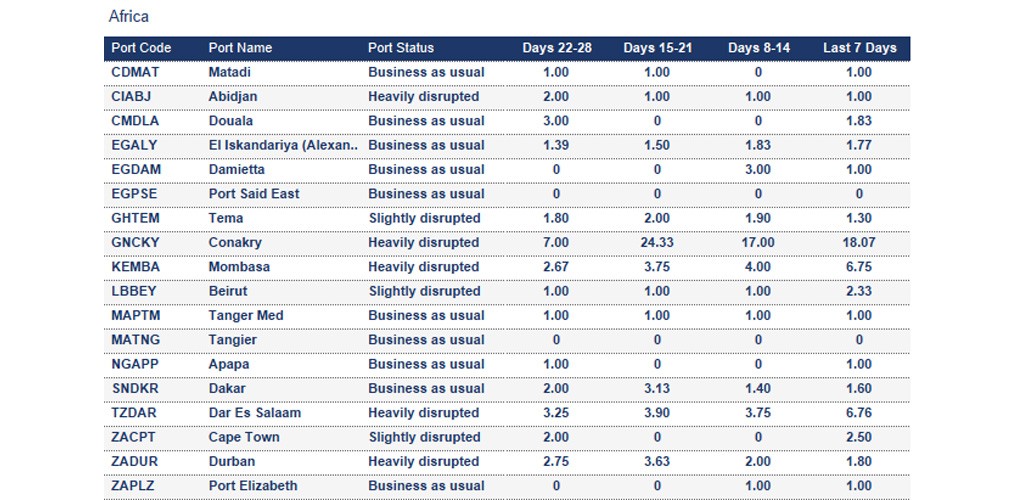
Guinea
Conakry: The 7-day average vessel waiting time is around 18.07 days due to heavy congestion. Some carriers even report waiting times of up to 30 days.
Kenya
Mombasa: The 7-day average vessel waiting time is around 6.75 days. In recent weeks, sustained heavy rainfall and sporadic port disruptions have impacted vessel berthing and departure schedules. Approaching the peak season, these conditions have resulted in delays across multiple services and intensified pressure on sailing timetables and onward connections to key global markets.
Mauritius
Port Louis: The 7-day average vessel waiting time is around 3 days due to adverse weather and operational challenges. Some carriers report waiting times of up to 12 days.
South Africa
Cape Town: The 7-day average vessel waiting time is around 2 days. Strong winds are expected until the end of week 46.
Durban: The 7-day average vessel waiting time is around 1.8 days. Crane replacement works are disrupting landside clearance, causing vessels to be only partially handled, severely impacting berthing reliability, particularly at Pier 2. Vessel bunching is causing additional delays.
Tanzania
Dar Es Salaam: The 7-day average vessel waiting time is around 6.76 days. Dar es Salaam port has faced severe disruption since 29 October following nationwide unrest. Although reopening was requested on 4 November, operations remain heavily congested, customs clearance is delayed, and connectivity issues persist. Full stabilisation of cargo movement may take several weeks.
Zanzibar: Waiting Time exceeds 2 days
Asia Oceania
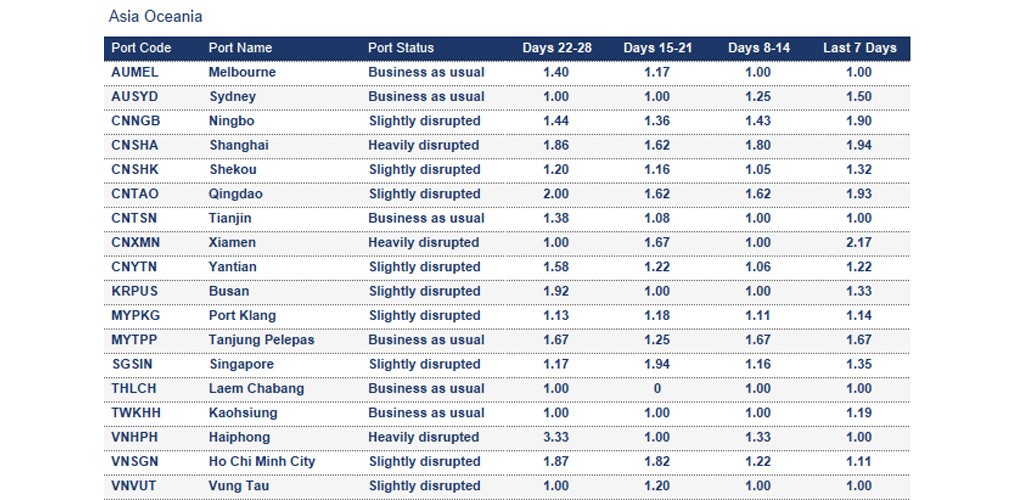
China
Dalian: The 7-day average vessel waiting time is around 4 days due to recent strong winds.
Nansha: The 7-day average vessel waiting time is around 2.71 days. Due to the collision between Wan Hai A17 and Hai Li 5, Nansha Port is currently experiencing severe disruption. However, starting at 6:00 AM on November 6, all inbound and outbound channels will resume normal operations without restrictions on vessel type or water depth. Container pickup and return activities will also gradually normalise from November 6 onward.
Ningbo: The 7-day average vessel waiting time is around 1.6 days due to berth and port congestion. Maintenance dredging is ongoing.
Qingdao: The 7-day average waiting time is around 1.93 days due to port congestion. Some carriers report waiting times of up to 3 days.
Shanghai: The 7-day average vessel waiting time is around 1.94 days due to berth and port congestion.
Shekou: Due to channel restrictions and limited transit slots for vessel movements, moderate berth congestion is currently being experienced at SCT, typically resulting in delays of approximately one day. This is particularly evident for mega-sized vessels, which require transit through the Tonggu Channel when entering or departing Shekou.
Malaysia
Port Klang: The average vessel waiting time is approximately 1.14 days due to berth congestion and vessel bunching. The yard density is at around 86%.
New Zealand
Auckland: The 7-day average vessel waiting time is around 2 days. Due to CMA’s terminal transfer from D4 to D5, including QC relocation, operations will be significantly constrained over the next three weeks.
Philippines
Manila: The 7-day average vessel waiting time is around 2.03 days due to port congestion. The country faced another typhoon last week, resulting in casualties and significant infrastructure damage. Read more.
Europe
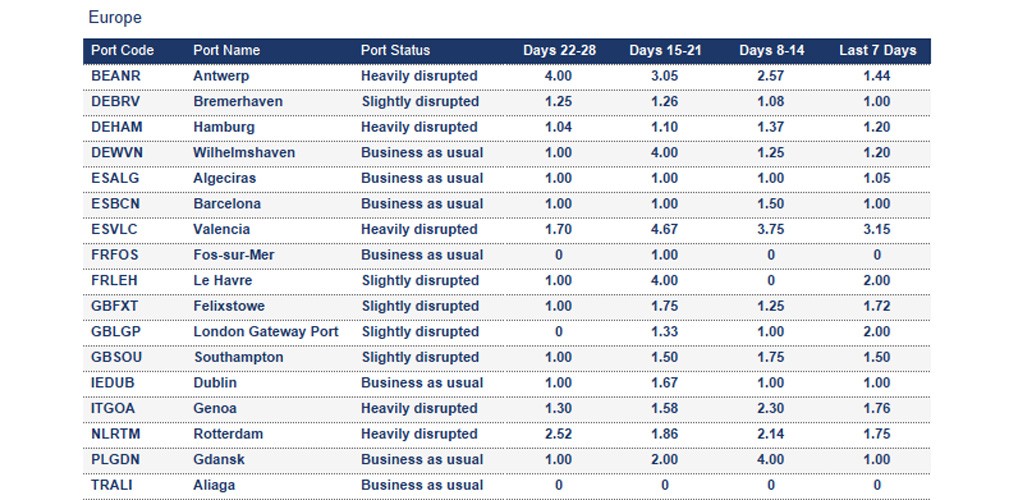
Belgium
Antwerp: The 7-day average vessel waiting time is around 1.44 days. The port is currently severely congested due to recent storm closures, labour shortages, as well as a severe yard congestion of up to around 90% for dry and reefers. Pilot services remain disrupted due to an insufficient number of pilots available to efficiently clear the backlog. The long container dwell times are causing additional disruptions.
France
Le Havre: The 7-day average vessel waiting time is around 2 days. The yard is at 90%. The berth is fully occupied. The port is experiencing a lack of equipment and significant delays in port haulage.
Marseille: The 7-day average vessel waiting time is around 2 days.
Germany
The German rail network’s ongoing disruptions are causing unpredictable delays for trains to and from Rotterdam. Read more.
Bremerhaven: The 7-day average vessel waiting time is around 1 day. The yard level is high at 85%.
Hamburg: The 7-day average vessel waiting time is around 1.2 days. The yard is stable at 75% utilisation.
- CTA: construction since 22/09 reduces berth capacity; larger feeders must use mainliner slots, and some services are rerouted to Unikai. Line-up remains at 100% due to construction and delays from RTM/ANR. Continued vessel delays are expected.
- CTH: Gantry crane maintenance is currently underway, which will limit operations at berth 1.
- CTB: There are currently delays in processing rail orders at the Container Terminal Burchardkai. The backlog now exceeds 3 hours, leading to considerable disruptions in our rail network.
Italy
Ancona: The 7-day average vessel waiting time is around 2 days.
La Spezia: The 7-day average vessel waiting time is around 1 day. Yard density remains high at 78%, but within manageable operational limits.
Naples: The 7-day average vessel waiting time is around 2 days.
Netherlands
Rotterdam: The 7-day average vessel waiting time is around 1.75 days. Although some terminals recovered after the storm in week 43, others are still disrupted with a high yard density. The berth line-up is full, and barges and feeders can still face waiting times of up to 48 hrs.
RSC Terminal: From December 10 to December 21, 2025, tracks 17 and 18 at RSC Rotterdam will be replaced, resulting in a 50% reduction in terminal capacity. Four pairs of trains will be cancelled during this period, resulting in lower overall capacity for shipments.
Réunion
Port de Pointe des Galets: The 7-day average vessel waiting time is around 1 day. However, some carriers report waiting times of up to 3 days due to operational challenges.
Middle East - Indian Subcontinent
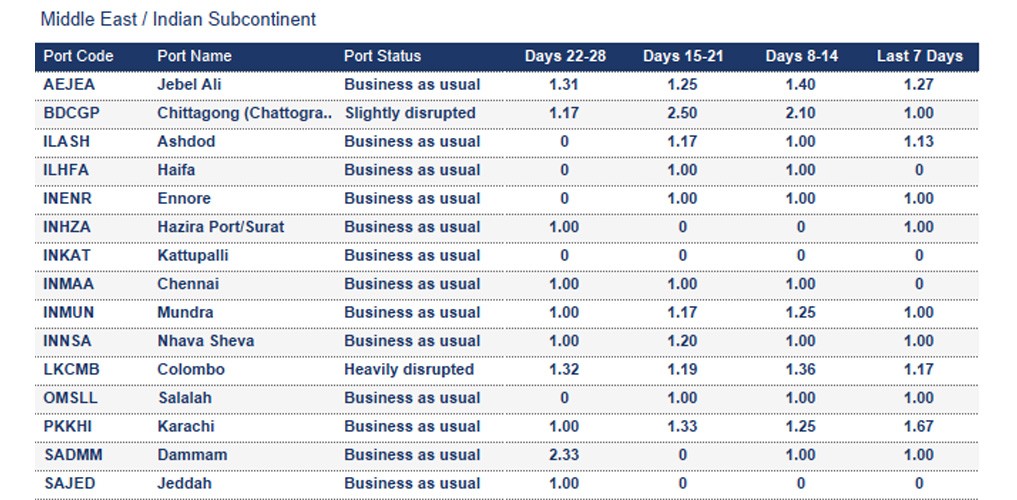 Bangladesh
Bangladesh
Chittagong (Chattogram): The 7-day average vessel waiting time is around 1 day. The yard improved to 65.1%. The Chittagong Port Authority continues to enforce strict limits on vessel port occupancy. No preferential or expedited berthing arrangements are implemented, except for vessels carrying the Bangladeshi flag.
North America
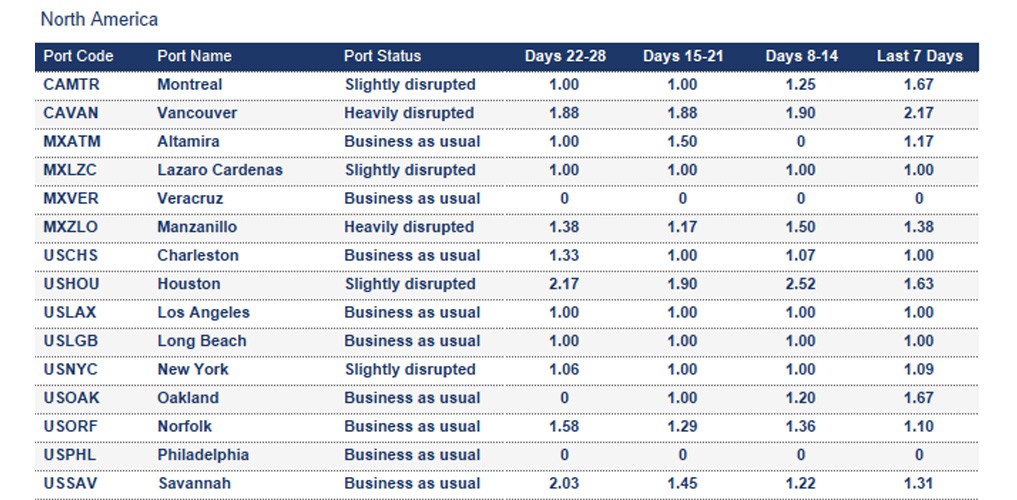
Canada
Average import rail dwell time for Canadian cargo (Vessel arrival to departure rail ramp):
- Halifax: 4 days
- Montreal: 8 days
- Prince Rupert: 7 days
- Saint John: 4 days
- Vancouver: 8 days
Mexico
Lazaro Cardenas: The 7-day average vessel waiting time is around 1 day. Due to ongoing customs supervision at the port of Lázaro Cárdenas, the release and dispatch of import cargo at both APM and HPH terminals is progressing slowly. This has resulted in considerable congestion across the terminal facilities.
Manzanillo: The 7-day average vessel waiting time is around 1.38 days. Trucking operations in Manzanillo are gradually stabilising, although a degree of uncertainty remains. The highway blockade in Michoacán has not impacted logistics. Rail services face disruption due to a derailment in Sayula, affecting the Pantaco–Manzanillo corridor; mitigation is expected by 6 November. A blockade on the La Barca line is causing severe delays, with no resolution date confirmed.
South and Central America

Jamaica
Kingston: The 7-day average vessel waiting time is around 2.78 days. The port is severely congested after Hurricane Melissa, forcing carriers to omit the port.
How Kuehne+Nagel estimates port disruption statuses
Seaexplorer has four port statuses that are estimated based mainly on the 7-day average vessel waiting time. Other factors include yard congestion, labour strikes, natural disasters or intermodal disruptions. Slightly different rules are applied to major ports, or ports that are hubs in their region, as they are typically more efficient.
- Business as usual means the port is currently operating without any significant disruption;
- Slightly disrupted is used if the 7-day average vessel waiting time exceeds 2 days;
- Heavily disrupted is used if the 7-day average vessel waiting time exceeds 4 days; and
- Port closed is used when the port suspends operations due to a major disruptive event.
How Kuehne+Nagel calculates the 7-day average vessel waiting time
Mainline container vessels may spend a certain number of days waiting at designated anchorage areas before their scheduled port call.
To calculate the 7-day average waiting time, we consider the waiting days of these vessels, excluding:
- Waiting times for feeder vessels,
- Idle ships without an announced next port,
- Slow steamers heading toward the anchorage but not actively waiting within the designated area
- Vessels passing through the anchorage area without intending to call at the port.
This rolling average is based on the data from the last seven days and is updated daily in seaexplorer.
To find the latest waiting time for a port, enter the port name or code in the search bar and select the relevant option.
Stay Ahead Stay Informed: Register for seaexplorer for the latest disruptions and vessel waiting times at global container ports.
